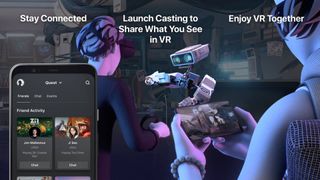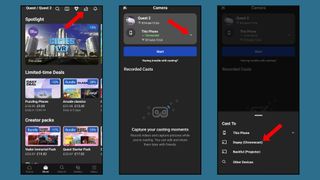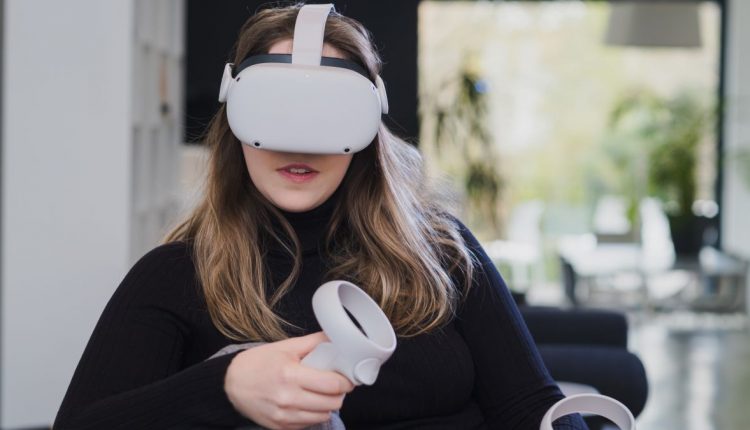Find out how to solid your Oculus Quest 2 to a TV
Quick Steps
- Plug a Chromecast into your TV
- Download the Oculus smartphone app
- Connect it to your Oculus Quest 2 headset
- Open the app’s Cast menu and choose your Chromecast
How to connect your Oculus Quest 2 to a TV
VR is usually pretty solitary given that the screens are only visible to whoever is wearing the headset. So, unless you’re an expert at interpreting a user’s flailing arms, you’ll want to connect the headset to an external screen like a TV so that you can watch what’s happening in the virtual world.
- A TV with an HDMI port
- A Chromecast (if your TV doesn’t have one built-in)
- A smartphone with the Oculus smartphone app
- On Oculus Quest 2 VR headset
We’re here with a step-by-step guide so that you can quickly hook your Oculus Quest 2 (now Meta Quest 2) to a TV and get back to playing VR games. Best of all you won’t need to worry about any annoying wires, you just need a Google Chromecast and a smartphone.
steps
Unfortunately, an Amazon Fire TV stick or another alternative streaming stick won’t cut the mustard – it has to be one of Google’s own right now.

A Google Chromecast 3 plugged into a TV (Image credit: Shutterstock / Albert Garrido)
- Download the Oculus Mobile app on your smartphoneto do this you’ll need an Android smartphone running on Android 5.0 or later, an iPhone running on iOS 12.4 or later, or an iPad running on iPadOS 12.4 or later.
When you originally set up your Quest 2 headset, you were probably prompted to also set up the app as part of the process, which means you may already have it downloaded. If you’ve since deleted it, then just re-download the app and sign in and you should be able to reconnect to your VR headset over Bluetooth without any trouble.

Oculus Mobile App screenshots showing a CGI user casting to their friend’s phone (Image credit: Meta)
If you haven’t used the app before at all, that doesn’t matter as it’s just as simple for you. Download the Oculus app from Google Play (opens in new tab) or the App Store (opens in new tab) and then sign -in using the Facebook or Oculus account that’s linked to your Quest 2.
Your headset should be connected to your account already, but if it isn’t go to Menu > Devices > + > Quest 2 and follow the onscreen instructions.
- Turn on your Quest 2 headset and cast it using the Oculus appthis last step is a little more involved than the last few, so here’s what to do.
Open up the app and look for the symbol that looks like a headset with a signal coming out of it in the top right. After pressing it, you should see your connected headset; you need to tap on the little down arrow next to it.
That’ll bring up a list of devices to cast to.
As you can see in the image below you can choose the phone you’re currently using, your nearby Chromecast, or a device with Chromecast built-in.

A step by step guide showing you how to connect an Oculus Quest 2 headset to a Chromecast (Image credit: Future)
final thoughts
Whether you’re trying to show off one of the best Oculus Quest 2 games to your friends or helping a total beginner through their first steps in VR, then knowing what they’re looking at is incredibly useful.
However, if you don’t want to invest in a Chromecast for just streaming VR to your TV, you can still use the Oculus app to cast to your smartphone for a similar effect. While much smaller than a TV screen, this is more than fine if there are only one or two people not in VR who want to watch along.
Wherever you cast to, we’d recommend muting the TV or smartphone as soon as you can, though. If the player hasn’t got headphones in, the Quest 2’s speakers should be loud enough for people not in VR to listen along.
The stream’s audio and video are on a slight delay, so if both your TV and headset are blasting out sound it is rather off-putting – especially for the immersed person.


Comments are closed.